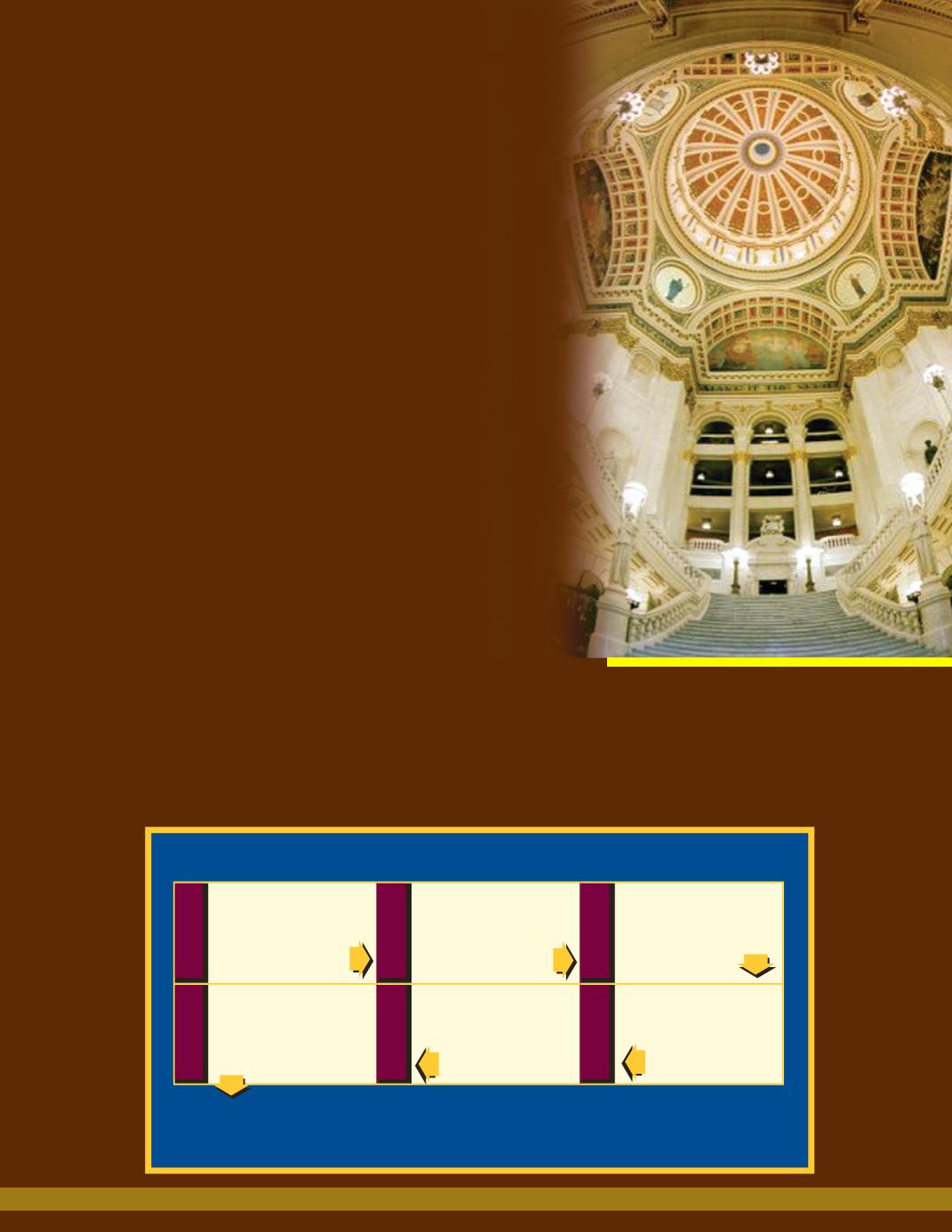
State Legislative Branch
The
legislative
branch of Pennsylvania’s government makes
laws. The state legislature ismade up of two groups of people who
meet separately, the
House of Representatives
and the
Senate
.
The voters of Pennsylvania elect representatives to serve in the
House of Representatives for a termof two years, after which they
are up for re-election. There are 203members in the House of
Representatives. The leader of the House, who is selected by its
members, is called the
Speaker of the House
.
Voters also elect senators to serve in the Senate for a termof
four years, after which they are also up for re-election. There are 50
members in the Senate. The Senatemembers select a leader, who
is called the
President Protempore
. This person leads the Senate
when the Lieutenant Governor is unavailable. When both groups
meet as one body, they are known as the
General Assembly
.
These law-making bodies can create any law that is not in
conflict with our national or state constitutions.
The Pennsylvania legislature creates laws for the well-being
of its citizens. Some lawsmake sure citizens act in a peaceful,
orderly manner. There are laws for hunting and fishing, and laws
that determine speed limits and other traffic rules. Other laws
describe how businesses in our state should operate. Nomatter
the law, there is a written criminal code which defines all actions
considered crimes by the state.
All laws created by the state legislature begin as
bills
. A bill is a
written suggestion for a law. To become a state law, amember of the
House of Representatives or Senate introduces a bill that will be
discussed and debated by other representatives and senators.
However, any bill dealing with raising
revenue
(money) has to begin in
the House chamber. A bill then goes through several steps, and both
chambersmust discuss and vote on it. If a bill passes every step in
the process by a simplemajority (more than half of the group), it is
sent to the Governor. If the Governor approves the bill, he will sign it
into law. The Governor can reject the bill, which is called a
veto
.
If the Governor vetoes a bill, the bill goes back to the legislature
to be discussed again. If a two-thirdsmajority in both
chambers
approves the bill a second time, it becomes a lawwithout the
Governor’s signature. This is called overriding the governor’s veto.
While this rarely happens, it does show another example of how the
systemof checks and balances work.
Summary of how a bill becomes a law: You decide!
A written idea: Mobile
phones are to be banned
from schools.
1.
2.
3.
The bill is given a
number and is sent to
groups for discussion.
Bill 50 enters the
Senate, the legislative
body in which it was
introduced, for
discussion.
Bill 50 goes to the Governor
for his approval. He signs
the bill into law, or he
vetoes it. The President
vetoes Bill 50.
6.
5.
4.
Bill 50 goes to the House of
Representatives for debate.
It passes by majority vote.
After discussion, Bill 50
is voted upon and
passed by the Senate.
Mobile Phone Bill 50 goes back to the legislators. Both the Senate and the House of
Representatives must pass the bill again. Only this time, two out of threemembers of each
groupmust pass the bill for it to become law. Take a vote in your class!
Our State Government
109
The grand staircase of the Capitol Rotunda
inHarrisburg. The staircase leads to the
StateHouse of Representatives on the right
and the State Senate on the left.


